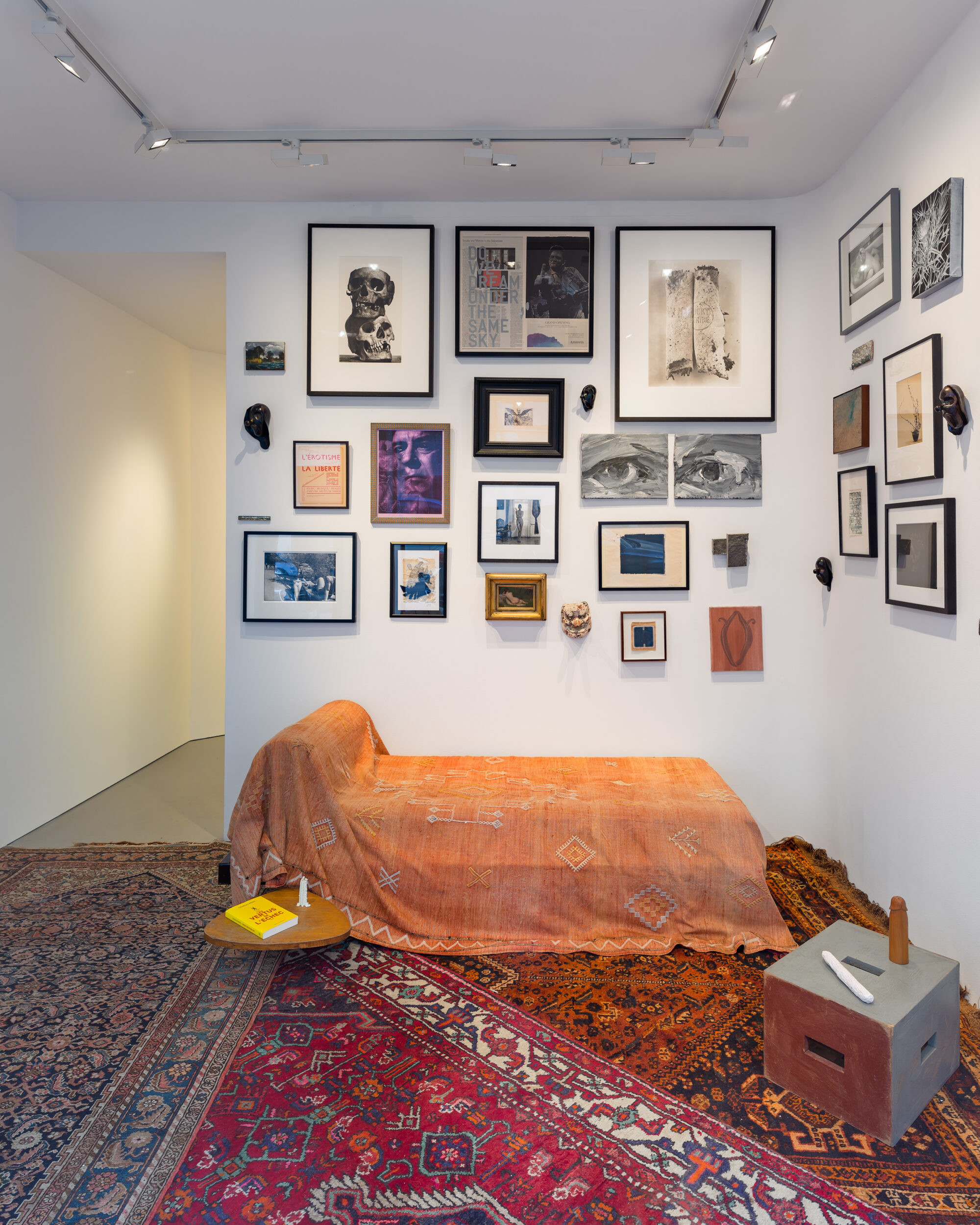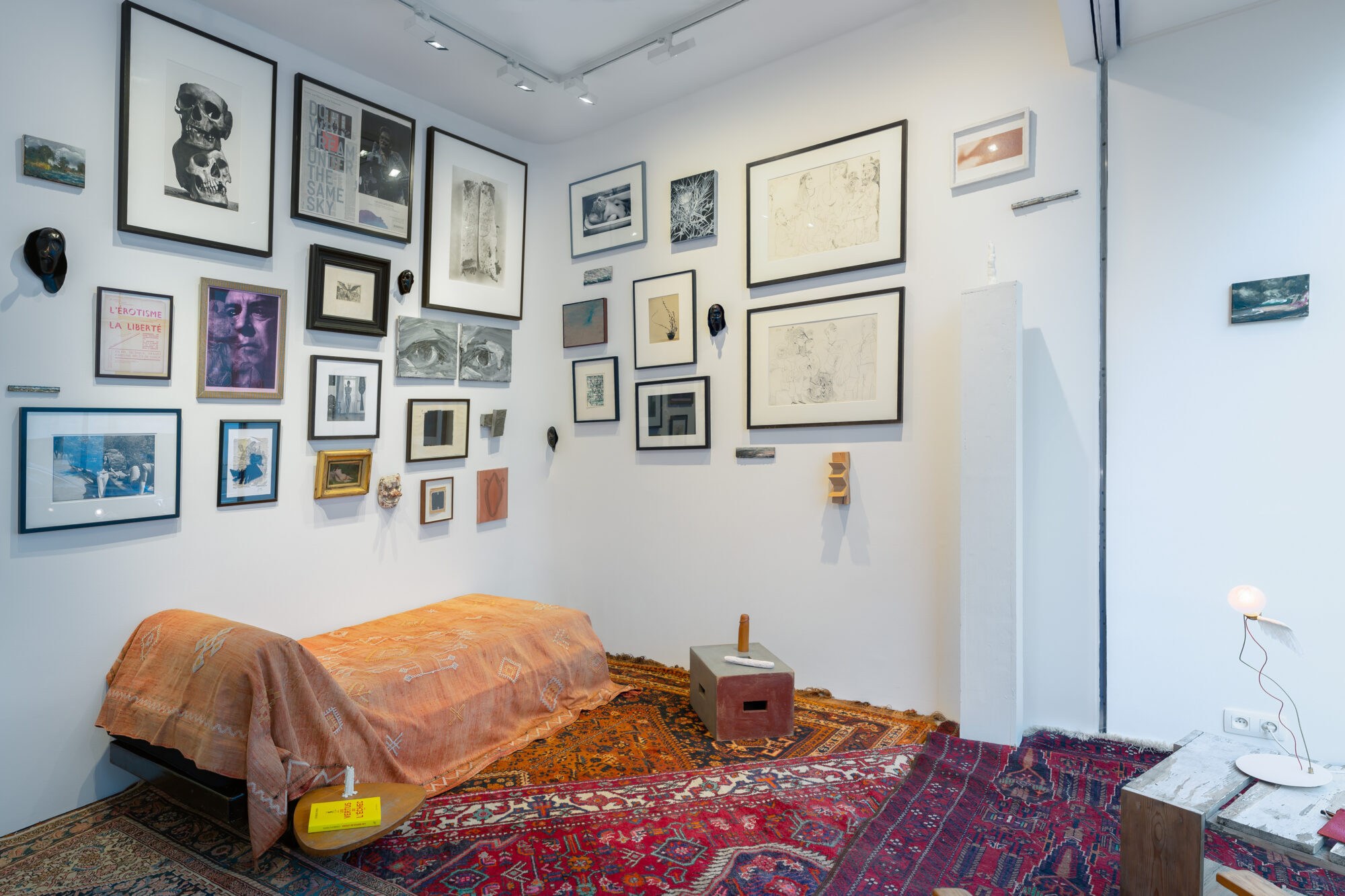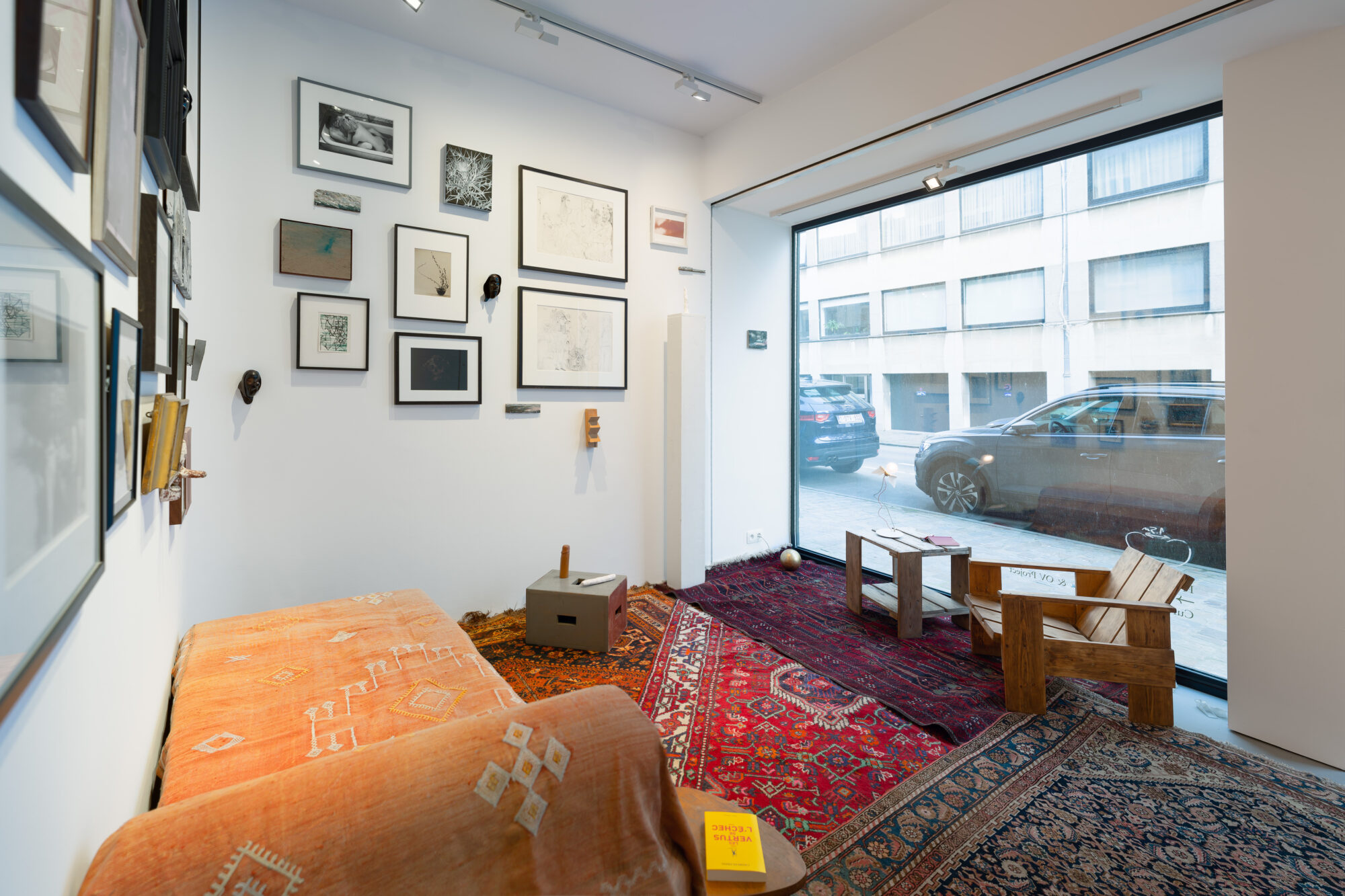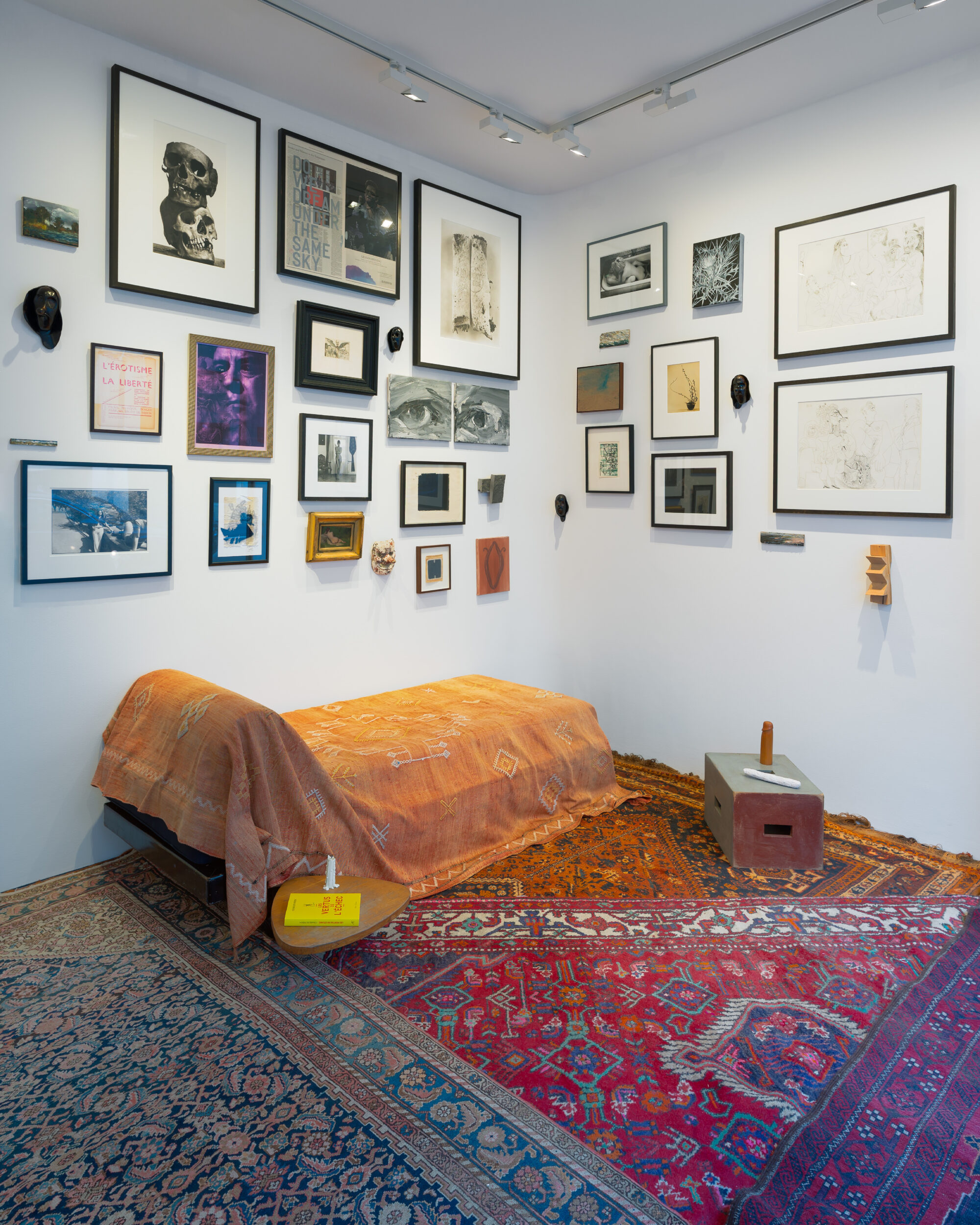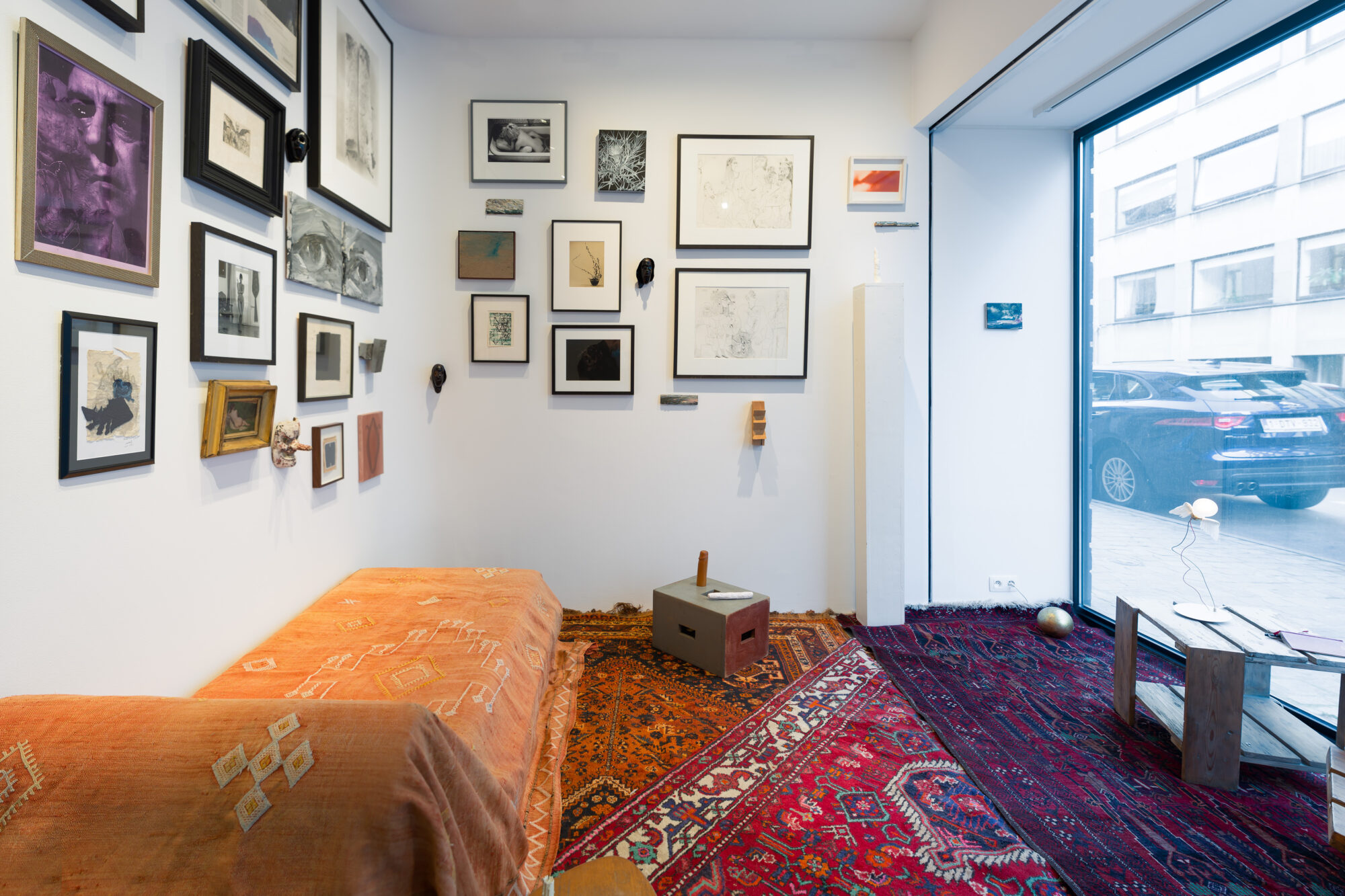De vous à moi
OV Project has joined forces with curator Emmanuelle Indekeu (Island, Brussels) to curate its new exhibition OV25 — De vous à moi.
De vous à moi refers to the secrecy of a conversation, implying that, what’s being said or shown remains between four walls. The visitor acts as a witness, peeping at a scene he should not see. The window display is staging an unoccupied parlour: a daybed, a chair, a side table. A notebook is opened, as if someone was just there. Frames are covering the walls hinting at the curiosity of passers-by to stop and take a look at this resting scene.
What is the story being told?
The configuration reminds us of a psychoanalyst office: the couch where the patient lays, the chair and the table slightly set back for the analyst. The works presented in the window are reflections on the wanderings of one’s mind. As a direct echo to psychoanalysis as first developed by Freud and then by Lacan, the created realm offers an overview of key concepts such as anxiety, sexuality, fear of death, fetishism. From the street we are standing outside of this intimate scenery, the window acting as the fourth wall.
It seems that sooner or later a character will appear to perform the opening act. But instead, the scene remains unmoved as if the clock had stopped, and slowly what’s in front of us becomes a representation of a time standing still.
But what happens when nothing moves, nothing changes? We lose the notion of time. On the contrary, what would happen if an action would take place but time would remain the same? We would be condemned to repeat our actions endlessly, with no other perspective than what the time dictates us, just like the Mad Hatter in Lewis Carroll’s Alice’s Adventures in Wonderland, who has been punished for “murdering the time”[1].
“[Time] won’t do a thing I ask! It’s always six o’clock now […] “it’s always tea-time, and we’ve no time to wash the things between whiles.”
“[…] Then you keep moving round, I suppose?” said Alice.
“Exactly so,” said the Hatter: “as the things get used up.”
“But what happens when you come to the beginning again?” Alice ventured to ask.”[2]
Through the image of the characters going endlessly from one clean cup to another, the aforementioned excerpt not only shows the absurdity of a race against a time that stays the same but also points at the vacuity of rituals performed systematically, annihilating any sort of critical ability.
Whether the scene unfolding in the window display is a representation of the passing of time, or conversely, of the time suspended, it brings us back to a more general way of approaching phenomena. The works exhibited, addressing directly our subconscious, are a means to reassess our positions as human beings, while the staging of the exhibition which creates a sense of expectancy, calls for new perspectives: what are we looking at? Or maybe rather, what are we waiting for?
[1] Alice’s Adventures in Wonderland, ‘A Mad Tea-Party’, Lewis Carroll, The Project Gutenberg EBook, 2008
[2] ibid.

Irving Penn
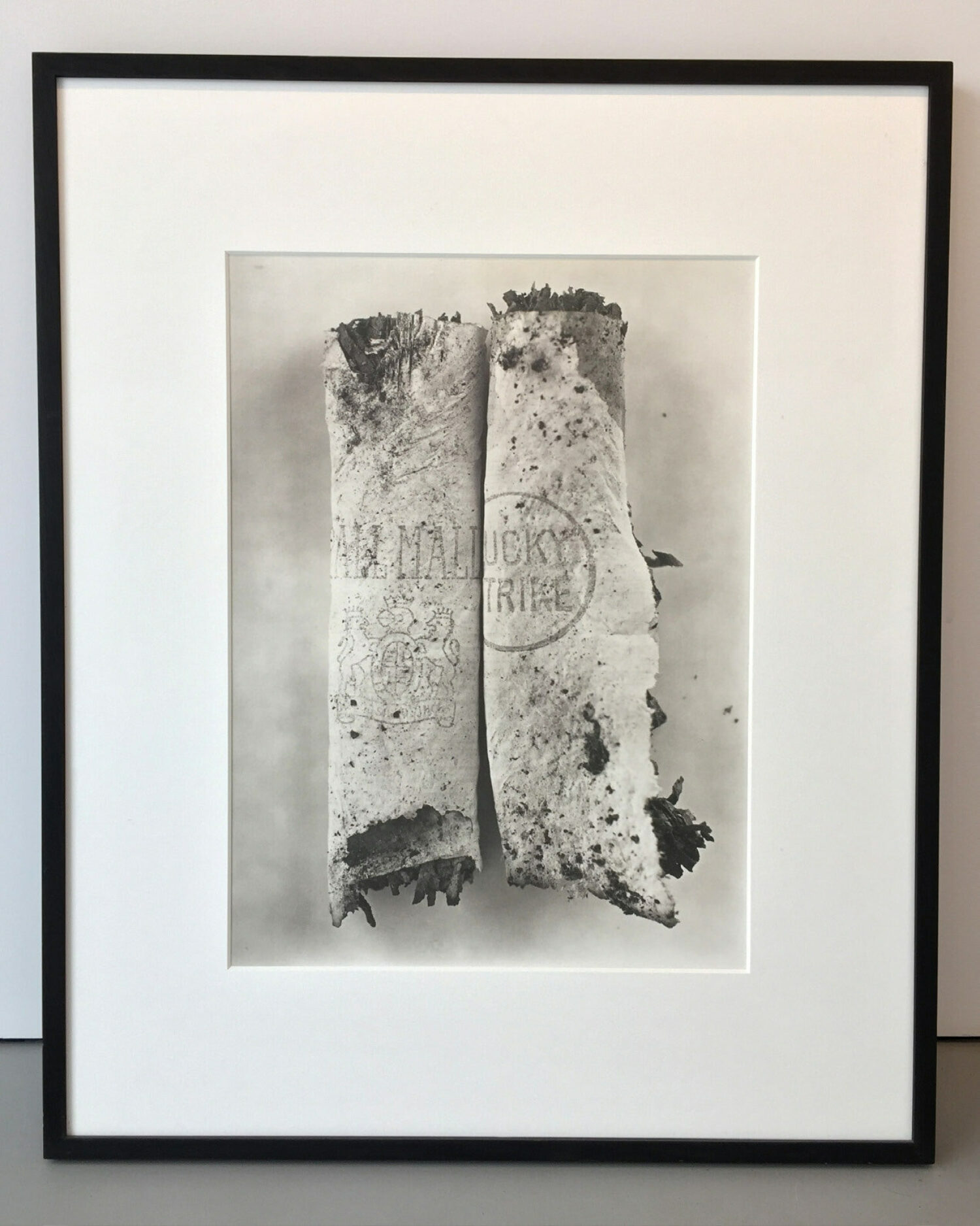
- Cigarette 98, New York, 1972
- platinum palladium print
- 58.5 x 43 cm (23 x 17 in.)
- edition of 18
- signed and annotated verso with stamps
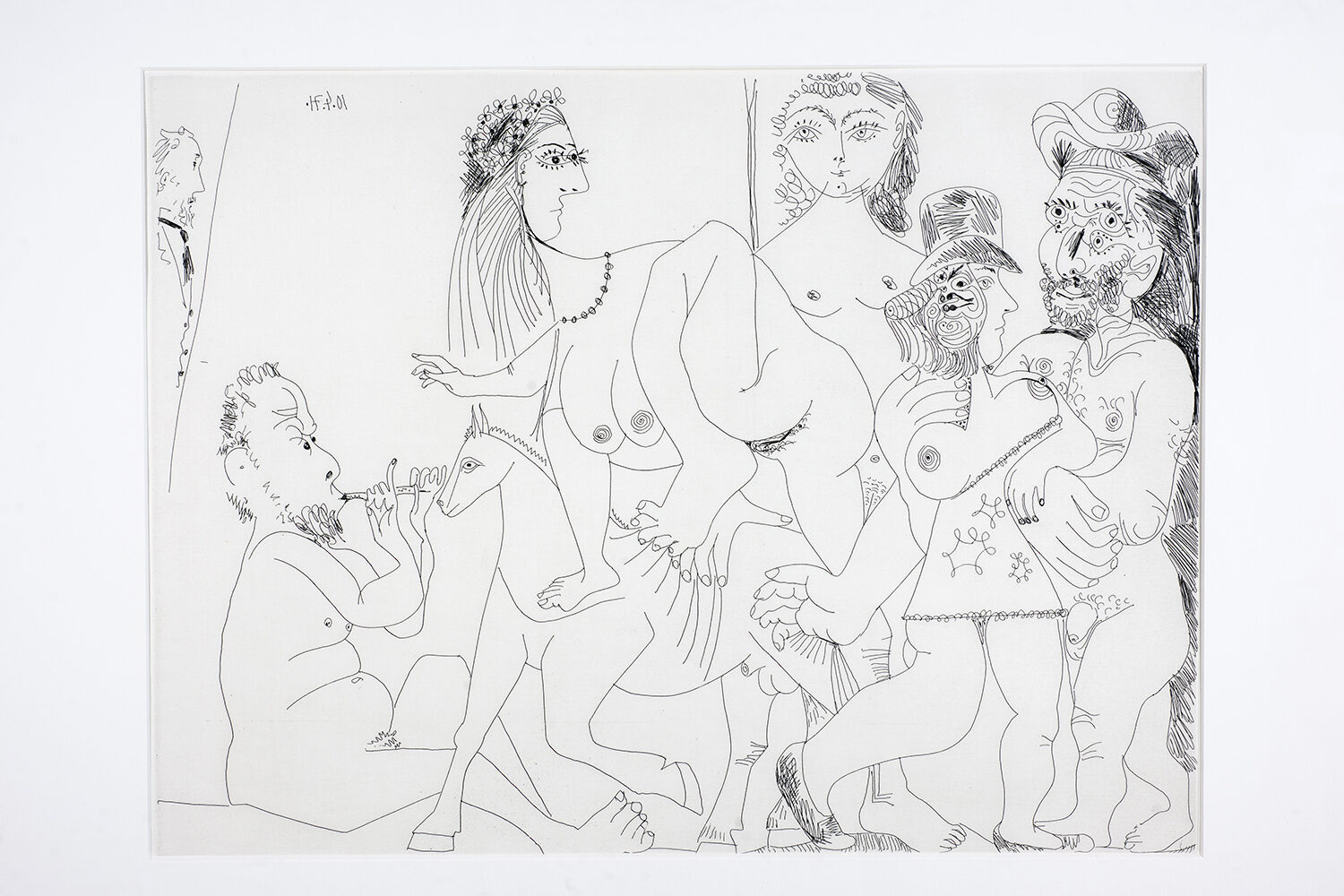
- Eau-forte, 10 avril 1971
- 37 x 49,5 cm
- Exemplaire n°38/50
